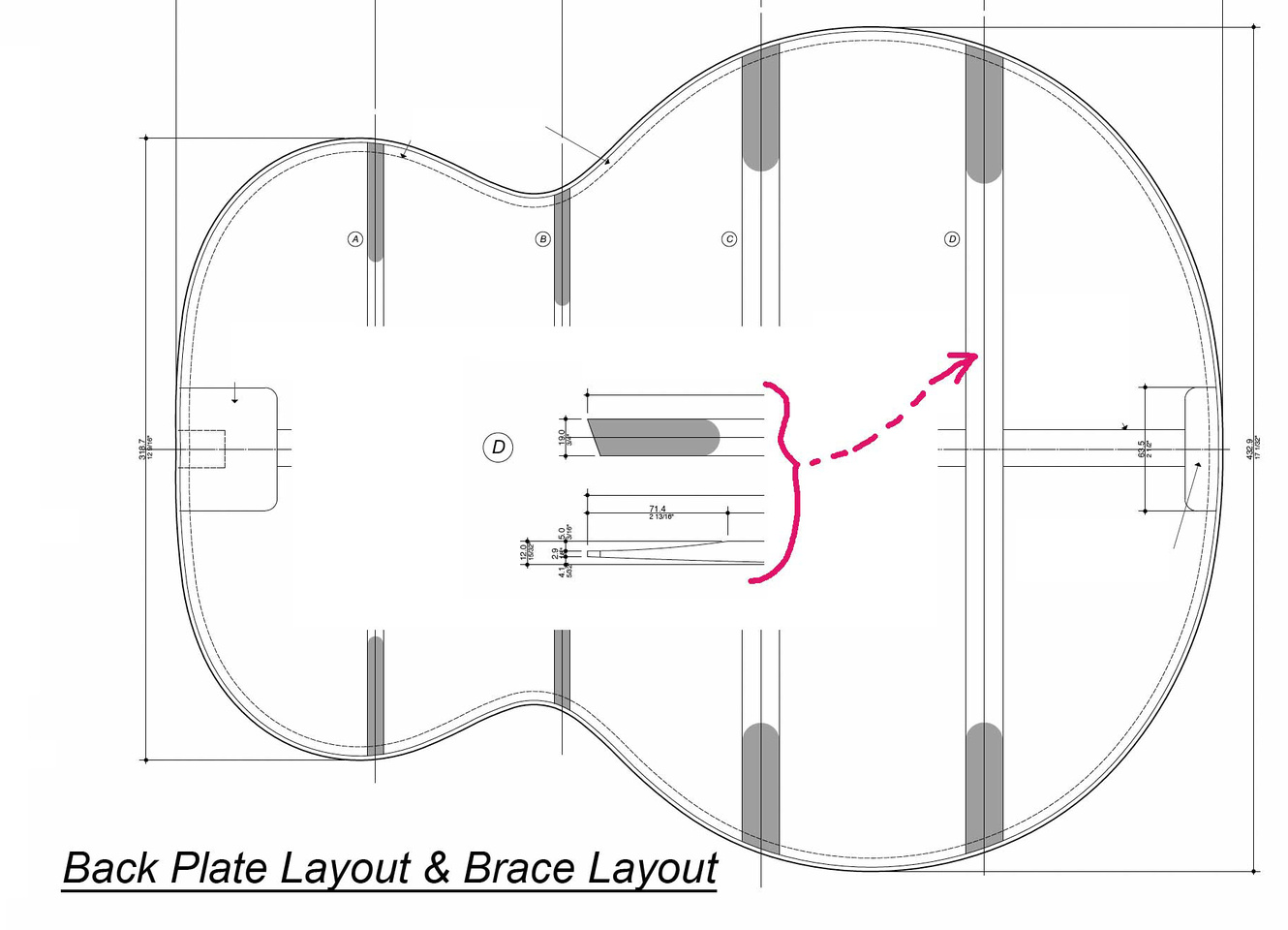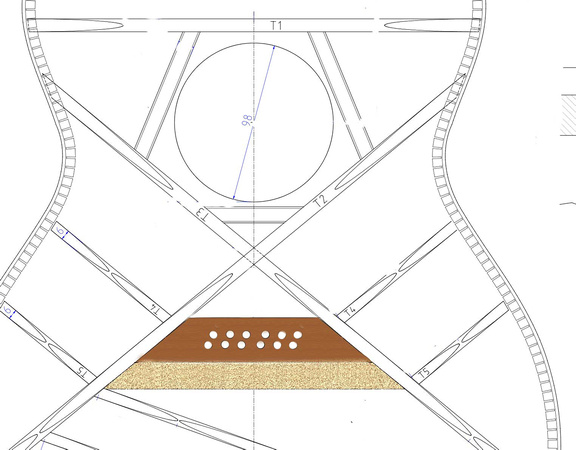
 |
|
#16
|
|||
|
|||
|
Alan, your finding was unknown to me until now and also somewhat surprising.
I'll do some very careful work on the back braces and thank you very much for this valid information! 
__________________
Thanks!  Martin D28 (1973) 12-string cutaway ...finished ;-) Hoyer 12-string (1965) Yamaha FG-340 (1970) Yamaha FG-512 (ca. 1980) D.Maurer 8-string baritone (2013-2014) and 4 electric axes |
|
#17
|
|||
|
|||
|
Quote:
|
|
#18
|
|||
|
|||
|
@Alan:
Do you mean the last back brace "D" ? I added the thickness and height. 
__________________
Thanks!  Martin D28 (1973) 12-string cutaway ...finished ;-) Hoyer 12-string (1965) Yamaha FG-340 (1970) Yamaha FG-512 (ca. 1980) D.Maurer 8-string baritone (2013-2014) and 4 electric axes |
|
#19
|
||||
|
||||
|
People often remark that the bass on in my smaller guitars is unexpectedly full. The “secret” is in the back braces.
Also, the idea of drilling holes in the braces to lighten them works better in metal machine work than it does in wood. Metal’s strength is omnidirectional, whereas wood’s strength is biased in the direction of the grain. |
|
#20
|
|||
|
|||
|
I'd think about removing wood from either C or D, or maybe both. Taking height from the center of the brace works best. I often end up with those two at about 9mm tall in the center: it looks as though you've got 12mm.
Fred Dickens brought up the notion of 'tuning' the back to work with the top back in the early 80s, iirc. I was a bit dubious until I tried it, but, as usual, it turned out that he knew whereof he spoke. I tried a lot of different back brace schemes over the years in an effort to come up with something that would be reliable and easy to tune. When I finally went back to parallel back braces I was making the two lower ones tall and narrow, to get high stiffness for the weight. I kept having to shave them 'way down to get the backs to work, so I tried the low, wide brace scheme with those, and they're fine. Mass in the back is probably your friend (up to a point), even though it's an enemy in the top. |
|
#21
|
|||
|
|||
|
Thank you for sharing your experiences!
I´ll have a try making both the D and then the C a bit lighter. Btw, the reduction of height at the fret D brought a decent amount of bass.  .................................................. .................................................. .......... Today when I inspected the inside of the guitar I noticed that the bridge-plate under the top of the bridge seems to be somewhat thicker than it should be. It could be about 5mm or 0.1968" or 13/64". I felt with my finger and didn´t measure. If I could lighten the unused lower part behind the 12 holes a little, that would certainly help with my problem. But how or with what could I do that through the sound hole??? I made the part lighter in color. But I don't know if that would do much to solve the problem... There would be a possibility of heating the bridge, then taking it off and heating the spot where it was glued on and to heat the glue of the bridge plate below. Maybe I could take that off too. Then I´d have to glue on both again: another smaller bridge plate and the bridge. But that would mean a lot of work and difficulties...worth the lot of work? 
__________________
Thanks!  Martin D28 (1973) 12-string cutaway ...finished ;-) Hoyer 12-string (1965) Yamaha FG-340 (1970) Yamaha FG-512 (ca. 1980) D.Maurer 8-string baritone (2013-2014) and 4 electric axes Last edited by viento; 02-22-2024 at 12:41 PM. |